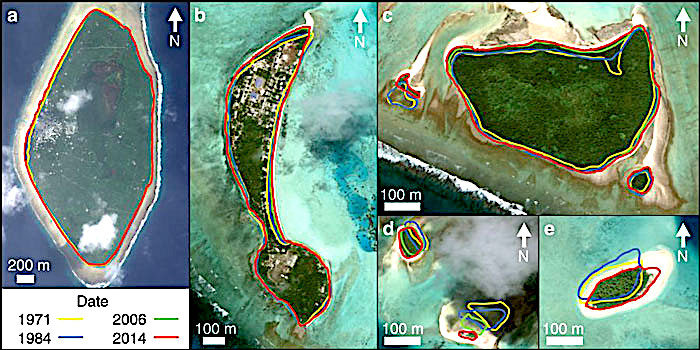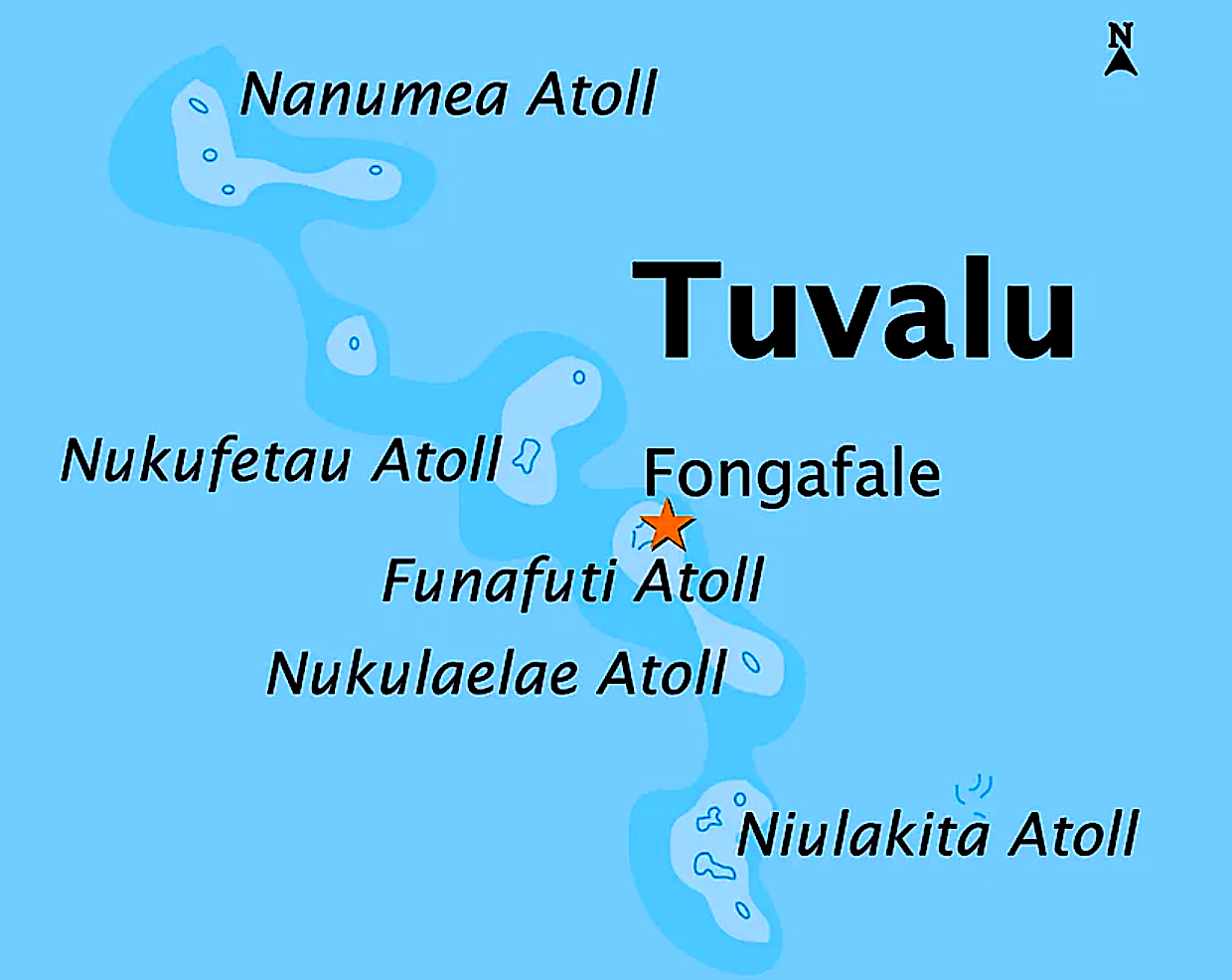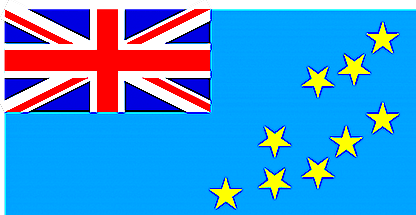abc.net.au/news/fact-check-is-the-island-nation-tuvalu-growing/10627318
.
The Claim:
Liberal MP and climate sceptic Craig Kelly made headlines in November when he was caught on tape mocking “lefties” for exaggerating the effects of climate change.
Speaking at a local party event, audio of which was leaked to the Guardian, Mr Kelly set out to debunk several justifications for climate change action, including the argument that Tuvalu, the Pacific island nation, was slipping beneath the sea.
YouTube Audio of Mr Kelly’s claim was leaked to ‘The Guardian’.
“The science tells us that Tuvalu, which I often hear about, is actually growing not sinking,” he told colleagues.
Is Tuvalu growing? RMIT ABC Fact Check investigates.
.
The Verdict:
Mr Kelly’s claim checks out.
In the four decades to 2014, Tuvalu’s total land area grew by 73 hectares, or 2.9 per cent.
The expert behind this research told Fact Check the nation’s islands were continually adjusting, and that the new land was habitable.
But that’s not to say Pacific nations are not at risk from rising seas.
One expert told Fact Check that among the Solomon Islands, for example, reef and volcanic islands had disappeared or been eroded, in some cases displacing indigenous communities.
Smaller islands in Tuvalu, though uninhabited, have also shrunk.
The research cited by Mr Kelly suggests certain islands — specifically, larger atolls and reef platforms — can adapt to the current pace of sea level rise.
However, the United Nations Intergovernmental Panel on Climate Change (IPCC) sets out four scenarios for future rises, three of them more severe than what Tuvalu has so far faced.
.
Why Is Tuvalu Important?
Halfway between Australia and Hawaii lies the tiny Pacific nation of Tuvalu.
It’s a place often cited in discussions about climate change and rising seas, given its 101 low-lying islands.
Indeed, Mr Kelly wrote about this link in a lengthy Facebook post in February 2018:
“A tenet of faith for Climate Alarmism devotees and anti-coal zealots is the belief that Pacific Islands such as Tuvalu are sinking beneath the seas.”
The Australian Government has itself announced initiatives worth $300 million to help its Pacific neighbours, among them Tuvalu, to combat the effects of climate change.
.
The Source Of The Claim
Contacted by Fact Check, Mr Kelly stood by his recorded words and said the claim was based on research from the University of Auckland.
This peer-reviewed study used satellite imagery to measure Tuvalu’s changing land area over four decades.
Between 1971 and 2014, it showed, the country grew by more than 73 hectares, or 2.9 per cent.
Each period of the study experienced net increases in land area, including the most recent decade.
Of Tuvalu’s individual islands, 73 had increased in land area while 28 had decreased. Just one had eroded entirely.
Tuvalu’s population is spread across nine of its largest islands, with about 50 per cent of its people living on Fogafale, in the Funafuti atoll.
These larger islands generally experienced the greatest increases in land size, while Tuvalu’s smaller, uninhabited islands fared the worst.
.
Why Is Tuvalu Growing?
The study looked at Tuvalu’s two island types, atolls and reef platforms.
Though both are formed from coral reefs, atolls are ring-shaped formations of islets or islands surrounding a lagoon, whereas reef platform islands are solid, single structures.
Their expansion, the study suggests, is the result of sediment, corals and other debris being washed ashore by storms and waves.
Coastal geomorphologist Paul Kench, who led the research team, told Fact Check that Tuvalu’s islands had “always been changeable” and that they “adjust their position on the reef surface” as waves, currents and sea levels change.
“This is a continual adjustment process,” he added.

Example of island change and dynamics in Tuvalu between 1971 and 2014
( Supplied: Kench, Ford and Owen ).
Notably, Tuvalu Prime Minister Enele Sopoaga criticised the research, claiming it had not considered the habitability of the new land area.
But Professor Kench told Fact Check this was not the case:
“These islands are essentially deposits of gravel and sand,” he said.
“The accreted material is no different to the older material.”
His previous research demonstrated similar growth in the atoll islands of Kiribati.
.
Future Sea Level Rises
In his statements, Craig Kelly cited the link between climate change and rising seas.
The UN Intergovernmental Panel on Climate Change (IPCC) in 2013 modelled four scenarios for future sea level rises, which vary according to projected carbon emissions. [ Sea levels have been rising long before modern civilisation.]
Under the IPCC’s most conservative scenario, the last two decades of this century would see oceans rise by 4.0mm per year (within a range of 2.0mm to 6.8mm).
The most severe scenario puts the rise at 11.2mm per year (within a range of 7.5mm to 15.7mm).
University of NSW Professor John Church, who is an IPCC lead contributor on rising seas, told Fact Check that sea levels did not rise uniformly but varied depending on factors such as ocean currents, surface winds and water temperature.
“There is a tendency for sea level rise to be less than the global average near regions of mass loss,” Professor Church said, explaining that rises were greater in places further from melting glaciers and ice sheets.
Professor Kench’s study reported that the seas around Tuvalu rose by about 3.9mm per year between 1971 and 2014 — roughly twice the global average over the same period.
The rate closely matches the IPCC’s most conservative scenario, the study reported, before adding that it was “unclear whether islands will continue to maintain their size” if the higher sea-level projections came to pass.
.
What About Other Pacific Islands?
In his speech, Mr Kelly went on to say “sinking Pacific Islands” were getting bigger.
Simon Albert, an expert in marine ecology and climate change at the University of Queensland, told Fact Check that the threat to low-lying Pacific Islands was not the possibility of sinking, but of erosion.
He said that although Tuvalu’s experience was largely true of the Pacific, the Solomon Islands offered a bleaker window into the future. There, sea levels had risen much faster than the global average.
Between 1994 and 2014, according to Dr Albert’s research, the Solomons experienced sea level rises averaging 7-10mm per year.
Meanwhile, between 1993 and 2018, the global average was 3.2mm per year.
While Tuvalu recorded a total rise of 15cm over four decades, the Solomons managed that in just two.
Dr Albert said that in parts of the Solomons, rising seas had combined with wave exposure to cause “dramatic coastal erosion leading to recession of coastlines and in some cases the loss of entire islands”.
His research has shown that some of the Solomons’ uninhabited reef islands, similar in structure to those in Tuvalu, had completely disappeared due to erosion.
The country’s volcanic islands, generally larger and steeper than atoll or reef islands, had also experienced coastal erosion. As a result, local indigenous communities — some of which had inhabited the islands for over 100 years — had been destroyed or displaced.
In the Tuvalu study, referring to the Pacific more generally, Professor Kench noted:
“Commonly, the densest populations are located in the economic and political centres, situated on smaller and less stable islands, which represent less than 1 per cent of the land available in the archipelagos.”
.
Principal Researchers: David Campbell, Billy Phillips
.
Sources:
-
-
-
-
-
-
-
-
-
-
-
-
-

-
Numerous marks made around the world above
ocean level made by the Chinese in
1421 are now under water.
- .
-
Reproduced here by:


 .
.


 .
.